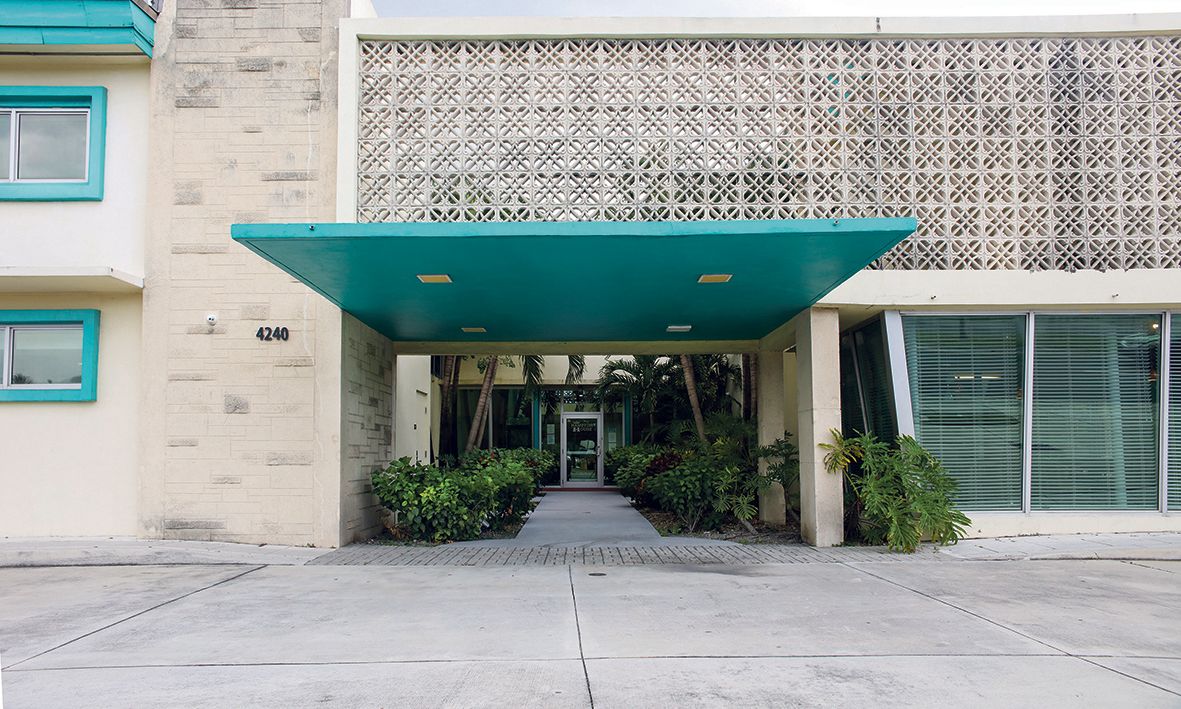In the early 2000s the building was saved from demolition by a non-profit community trust Photo: Vodagraph
When it opened in Miami’s Brownsville neighbourhood in the early 1950s, the Hampton House was known as the Booker Terrace Motel, named in honour of Booker T. Washington, the great Black American organiser and educator. It was billed at the time as the first luxury accommodation for Black travellers in the segregated American South, with amenities such as a 24-hour restaurant, a courtyard pool and a jazz club. New ownership took over in 1961, then renovated and rebranded the establishment as the Hampton House Motel, a reference to Washington’s Hampton Normal and Agricultural Institute.
Gabriel Kilongo founded local gallery Jupiter Contemporary Photo: Josh Aronson; Courtesy of Jupiter Contemporary, Miami Beach
Throughout the 1960s, the Hampton House reigned as the Miami hotel of choice for the brightest stars of Black American culture, ranging from Aretha Franklin and Sam Cooke to Muhammad Ali and Martin Luther King Jr. (who gave an early version of his “I Have a Dream” speech on site). Although the Hampton House was a strong draw on its own, its clientele had limited choices: Miami Beach was still a “sundown town”, meaning people of colour could be fined, arrested or worse if they refused to leave by dusk. Once desegregation expanded the lodging, dining and entertainment options for Black patrons in greater Miami, however, business gradually dried up at the Hampton House, which closed in 1976.
The motel was rescued from demolition in the early 2000s by a non-profit community trust that now manages the property. The trust and its supporters have been working for years to not only return what has been renamed the Historic Hampton House to pristine condition but also to transform it into a community hub and cultural centre celebrating its rich tradition. Gabriel Kilongo, a Miami resident and the founder of the local gallery Jupiter Contemporary, advocates for the motel’s inclusion on your Art Week itinerary.
The Art Newspaper: What was your first encounter with the Historic Hampton House?
Gabriel Kilongo: To be very honest with you, I discovered it through [the collector] Beth Rudin DeWoody. She invited us to do a show there, with two other galleries, that revolves around the history of the place and the dark and sombre history of America. It’s called Gimme Shelter (until 22 January 2024). The idea is to offer a place of shelter, safety and inclusivity through art, like the Hampton House was a place of comfort, peace and safety for Black people as a hotel.
How much did you know about the segregation era of Miami and Miami Beach, as someone who moved here later in life?
We’re a Black-owned business in Miami Beach. At the time I started the gallery, I was not aware this [trait] was an anomaly. Up until the late 1960s, there were segregation laws in Miami that prohibited Black people, people of colour and I believe Jewish people from being on the beach past [sundown]. If you were a person of colour, you were expected to do the dirty work, serve the other races and then go spend the night in other places. Even Muhammad Ali had his famous fight on the beach [against Sonny Liston] and had to go somewhere else [after].
Martin Luther King Jr.’s room; he gave an early version of his “I Have a Dream” speech at the motel Photo: Vodagraph
And “somewhere else” was the Hampton House. Given the star-studded history of the hotel, is it strange that it has not been more celebrated as a cultural landmark?
It’s this iconic place that I think Miami was trying, for better or worse, to shove under the rug. It was really forgotten. Now the city has been making efforts to fund and historicise it.
Brownsville, the Hampton House’s neighbourhood, is not a section of town with a lot of other art happenings, is it?
I can’t think of anything else. Technically, it’s a five-minute drive from the Rubell Museum and Superblue in Allapattah. Three galleries and one art foundation have opened there in the past two to three months, and now other collectors are looking to open in that area, which is literally side-by-side with Brownsville.
Are you hoping that Gimme Shelter can be a part of some greater renaissance for the hotel and maybe even the neighbourhood?
We’re hoping to raise more awareness about this place and hopefully cement it as a cultural destination in Miami. I think it’s interesting now that, as a gallery, I can be in a place like Miami Beach without really having to worry about being welcome here. There’s something empowering about that, and we owe it to those who came before us who couldn’t benefit from this type of privilege to talk about it.
• The Historic Hampton House, 4240 NW 27th Avenue, Brownsville, Miami

